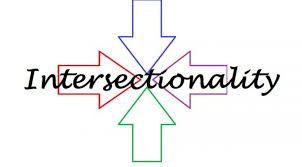NSSE (National Survey of Student Engagement) researchers recently explored how various racial/ethnic subgroups within the LGBQ+ community differed in their perceptions of belongingness, institutional commitment to the well-being of LGBQ+ people, and frequency of "outness" to others by providing insight into the ways that intersections of race and sexuality can affect student outcomes and experiences. Though scholarship that explores intersectional differences within the LGBQ+ college student community has started to emerge in higher education, more research in this area is needed. The following question guided such an inquiry: Are perceptions of belongingness, institutional commitment, and outness different for specific sexual minority and racial groups within the LGBQ+ college student community?
The Model of Multiple Dimensions of Identity (which contends that social identities must be understood in relation to one another, not in isolation), various critical quantitative influences, and the researchers' own positionality guided this exploration of data from the 2017 administration of the NSSE. A subset of 30 participating NSSE institutions received an additional item set asking students about LGBQ+ issues at their institution resulting in over 14,000 student respondents. Researchers found several instances of unique interactions of sexuality and racial identities based on:
- Using a series of regression models,
- Effect coding of independent variables to make comparisons to the average student,
- Interaction terms to examine the unique impact different racial/ethnic identities of LGBQ+ have on outcomes, and,
- Quotes from student responses to a write-in question asking about any further reflections or experiences regarding LGBQ+ issues at their institution.
For example, although identifying as White had a positive impact on students' sense of belonging with respect to their sexual orientation, the interaction term for LGBQ+ White students was negative. This may be a result of having conflicting majority and minority identities that complicate students' sense of belonging on campus. In another example, although identifying as Asian had a negative effect on students' sense of belonging with respect to their sexual orientation, the interaction term for LGBQ+ Asian students was positive. This could be that, relatively, LGBQ+ Asian students feel less supported in their home communities and so view their institutions as a more welcoming environment.
Additional details and more findings about this study can be found here.


